M-System MU-50 Handleiding
Bekijk gratis de handleiding van M-System MU-50 (24 pagina’s), behorend tot de categorie Afzuigkap. Deze gids werd als nuttig beoordeeld door 20 mensen en kreeg gemiddeld 4.5 sterren uit 10.5 reviews. Heb je een vraag over M-System MU-50 of wil je andere gebruikers van dit product iets vragen? Stel een vraag
Pagina 1/24

INSTRUCTIONS FOR INSTALLATION AND USE
MONTAGE- UND GEBRAUCHSANWEISUNG
INSTRUCTIONS POUR L'INSTALLATION ET L’UTILISATION
ISTRUZIONI PER L'INSTALLAZIONE E L’USO
INSTRUCCIONES PARA INSTALACIÓN Y USO
INSTRUÇÕES DE INSTALAÇÃO Y UTILIZAÇÃO
AANWIJZING VOOR GEBRUIK EN INSTALLATIE

ENGLISH
DESCRIPTION
The hood may be installed in the filtering or the ducting version. Filtering version (Fig. 1): The hood aspirates
the kitchen air saturated with fumes and odours, purifies it through the grease filters and charcoal filters and returns
clean air into the room. For constant efficiency, the charcoal filters must be replaced periodically. The charcoal
filters are not supplied. Ducting version (Fig. 2): The hood aspirates the kitchen air saturated with fumes and
odours, passes it through the grease filters and expels it to the outside through an outlet pipe. With this version
the charcoal filters are not required.
Decide from the outset on the type of installation (filtering or ducting). For greater efficiency, we recommend
you install the hood in the ducting version (if possible).
INSTALLATION
ATTENTION: The appliance should be installed by a qualified operator.
INSTALLATION IN DUCTING VERSION:
1. Before fixing, the disposal duct for air evacuation to the outside must be installed. Use an disposal duct
with: – minimum indispensable length; – minimum possible bends (maximum angle of bend: 90°); – certified material
(according to the State); – an as smooth as possible inside. It is also advisable to avoid any drastic changes
in pipe cross-section. We recommend using a 123 mm diameter pipe for models shown in Figures 3 and 4, and
a 150 mm diameter pipe for the model shown in Figure 5. For air evacuation to the outside, follow all the other
instructions given on the “Warnings” sheet.
2. Prepare a suitable power supply. For the electrical connection, follow all the other instructions on the
“Warnings” sheet.
3. Remove the metal grid or grease filters (make reference to Figures 6, 7 or 8 according to the model you
have purchased):
Fig. 6: remove the metal grid by moving the 2 side fasteners (A).
Fig. 7 and 8: remove the filter/s by moving fastener (B) and turning the filter outwards. Afterwards, remove
the metal grid by moving the 2 side fasteners (C).
4. Cut a hole in the bottom of the pensile cupboard in order to settle the appliance (Fig. 9).
5. To install the appliance, adjust the position of the clasping side spring by means of the proper screw
(Fig. 10D), according to the thickness of the bored panel to which it is going to be anchored.
Insert the appliance in the pensile cupboard and lock it by means of the side spring. Use the holes which
have already been made in the casing of the appliance to definitively fix it by means of 4 extra screws (provided)
- Fig.11.
6. Connect the disposal duct to the air evacuation pipe of the hood. Use a flexible pipe and lock it to the
air evacuation pipe of the hood with a metal hose clamp (pipe and clamp are not provided). Make the electrical
connections.
7. Refit the metal grid and/or the grease filters.
INSTALLATION IN FILTERING VERSION:
Proceed with installation, making reference to the instructions for the extraction version (see points 2, 3, 4,
5), and then follow the instructions below.
Connect the hose to the hood air outlet so the air is conveyed to the top of the wall unit; secure the hose
with a metal clamp (hose and clamp are not provided). Make power connections.
Check whether the charcoal filters have already been fitted. If necessary, proceed to fit these as follows:
rest the charcoal filter on the motor unit by making the pins coincide; turn the charcoal filter until this is fast
(refer to Figures 12, 13 or 14 according to the model purchased).
Refit the metal grid and/or grease filters.
OPERATION
Depending on the model, the unit is equipped with the following controls:
Controls shown in Fig. 15: Key Key A = turns the lights on/off. B = turns the TIMER on/off: press once
to turn the timer on, therefore, after 5 minutes, the motor cuts out (at the same time the selected speed blinks
on the display); the timer remains on if the motor speed is changed. Display C = - indicates the selected motor
speed (from 1 to 4); - indicates Timer On when the number blinks; - indicates Filter Alarm when the central segments
is on or blinking. Key D = makes the motor work (at the last speed selected); pushing the button again, the speeds
of the motor are sequentially selected from 1 to 4; keeping this button pressed for about 2 seconds shuts down
the motor. Key R = resets the grease filters or charcoal filters; when the filter alarm appears (i.e. when the central
segment on the display goes on), the grease filters must be cleaned (30 hours of operation); when the central
segment starts blinking, the grease filters must be cleaned and the charcoal filters replaced (120 hours of
operation). Obviously, if the hood is not a filtering model and does not have a charcoal filter, clean the grease

filters both when the central segment goes on and when it starts blinking. The filter alarm can be seen when the
motor is off and for about 30 seconds. To reset the hour counter, keep the button pressed for 2 seconds while
the alarm can be seen.
Controls shown in Fig. 16:
AUTOMATIC OPERATION WITH SENSOR:
Key A : switches the lights on/off. Key B : enables/disables “Automatic” function. When this function is selected,
an “A” appears on the display C, and the speed of the motor increases or decreases depending on the smoke,
odours and gas present in the kitchen. Display C : - indicates the automatic operation of the sensor (the
letter “A” appears);- indicates the motor speed selected automatically by the sensor; indicates the filter alarm
whenever the central segment is illuminated or flashing. Key D : decreases motor speed / Reset; decreases
motor speed to zero (stopping); in any case however, after approximately 1 minute, the hood resumes automatic
operation at the speed set by the sensor. Whenever the key is pressed during the display of filter alarms,
a RESET occurs, and the counting of the hours resumes again. Key E : increases motor speed; in any case
however, after approximately 1 minute, the hood resumes automatic operation at the speed set by the sensor.
Modification of sensor sensitivity: sensor sensitivity can be modified by operating as follows:
- stop the hood by pressing key B. – Simultaneously press keys D and E (the sensor’s sensitivity index will
appear on the display) - Pressing keys D or E, the sensor’s sensitivity will either increase or decrease (1
: minimum sensitivity / 9: maximum sensitivity). – whenever the power supply is interrupted, the sensor will
resume operation with a sensitivity index of 5.
Warning: in order to avoid damaging the sensor, never use silicone products near the hood!
OPERATION AS TRADITIONAL HOOD:
Key A : switches the lights on/off. Display C : - indicates the motor speed selected (from 1 to 4); - indicates
the operation of the Timer when the number is flashing; - indicates filter alarms whenever the central segment
is illuminated or flashing. Key D : decreases motor speed / Stop / Reset; decreases motor speed to zero
(stopping). Whenever the key is pressing during filter alarm display, a RESET occurs, and the counting of the
hours resumes again. Key E : enables the motor / increases motor speed /TIMER. Pressing this key starts
the motor (at the latest speed set); pressing the key again increases motor speed, while keeping the key pressed
down for a few seconds enables the TIMER, and 5 minutes later the motor will stop (while the number of speed
setting selected will simultaneously begin flashing on the display); the Timer will remain enabled if motor speed
is changed. In order to disable the Timer, press the key again.
Controls shown in Fig. 17: Switch A: LIGHT; position 0: light off; position 1: light on. Switch B: MOTOR
SPEED: makes it possible to select the motor operating speed; position 0: motor off. C: Motor on light.
Controls shown in Fig. 18:
Key A: turns the lights on/off; every 30 hours of operation the corresponding
pilot lamp (S) comes on to indicate that the grease filters must be cleaned; every 120 hours of operation the
corresponding pilot lamp (S) flashes to indicate that the grease filters must be cleaned and the charcoal filter
replaced. To restart the hour counter (RESET), hold the button A pressed down for about 1” (while the pilot lamp
S is on). Key B: drives the motor in first speed (the corresponding pilot lamp comes on); when holding it down
for about 1”, the motor cuts out; when pressing the button a second time (while the pilot lamp is on) , the TIMER
is activated and thus the motor stops after 5’ (the pilot lamp flashes). Key C: drives the motor in second speed
(the corresponding pilot lamp comes on); when pressing the button a second time (while the pilot lamp is on) ,
the TIMER is activated and thus the motor stops after 5’ (the pilot lamp flashes). Key D: drives the motor in
third speed (the corresponding pilot lamp comes on); when pressing the button a second time (while the pilot lamp
is on) , the TIMER is activated and thus the motor stops after 5’ (the pilot lamp flashes). Key E: drives the motor
in fourth speed (the corresponding pilot lamp comes on); when pressing the button a second time (while the pilot
lamp is on) , the TIMER is activated and thus the motor stops after 5’ (the pilot lamp flashes).
Pay special attention to the grease filters: if the model purchased has the controls shown in Figure 15/16:
the grease filters must be cleaned approximately once every 30 hours of operation (when the central segment
on the display goes on or starts blinking). Once the cleaned filters are reinstalled, keep button R (Reset) pressed
for two seconds to reset the counter. If the model purchased has the controls shown in Figure 17: the grease
filter must be cleaned periodically: exactly how often depends on use (at least once every other month). Wash
out the filter using a neutral soap. If the model purchased has the controls shown in Figure 18: the grease filters
must be cleaned approximately once every 30 hours of operation (when the light button lamp comes on) - Fig.18S).
Wash out the filter using a neutral soap. Once the cleaned filters are reinstalled, to reset the counter hold the
light button pressed down for about 1” (Fig.18A) while the corresponding pilot lamp (S) is on. IMPORTANT: The
metal grease filters must be periodically cleaned following the above instructions, while the synthetic grease filters
(white colour) must be replaced, according to the same cleaning frequency as the metal filters.
Removing the grease filters:
- For the model shown in Fig. 6: remove the metal grid by moving the 2 side fasteners (A). Remove the filter
retainers (Fig. 19F) and then the metal (or synthetic) grease filter (Fig. 19G).
- For the models shown in Fig. 7 and 8: remove the metal grease filter by moving fastener B and turning the
filter outwards.
Product specificaties
| Merk: | M-System |
| Categorie: | Afzuigkap |
| Model: | MU-50 |
| Soort bediening: | Draaiknop |
| Kleur van het product: | Roestvrijstaal |
| Breedte: | 520 mm |
| Diepte: | 258 mm |
| Hoogte: | 245 mm |
| Soort: | Inbouw |
| Motor vermogen: | 135 W |
| Aantal motors: | 1 |
| Materiaal behuizing: | Roestvrijstaal |
| Maximale afzuigcapaciteit: | 450 m³/uur |
| Afzuigmethode: | Luchtafvoer |
| Aantal lampen: | 2 gloeilamp(en) |
| Type lamp: | Fluorescerend |
| Soort vetfilter: | Roestvrijstaal |
| Vermogen lamp: | 40 W |
| Aantal filters: | 1 stuk(s) |
| Aantal snelheden: | 3 |
Heb je hulp nodig?
Als je hulp nodig hebt met M-System MU-50 stel dan hieronder een vraag en andere gebruikers zullen je antwoorden
Handleiding Afzuigkap M-System

25 Januari 2024

25 Januari 2024

25 Januari 2024

4 Juni 2023

26 Mei 2023

9 Mei 2023

8 Mei 2023

23 April 2023

20 April 2023

20 April 2023
Handleiding Afzuigkap
- Fagor
- Steel Cucine
- Sam Cook
- Kobe
- Euro Appliances
- IKEA
- Apelson
- Teka
- Kaiser
- Edesa
- Blaupunkt
- Infiniton
- Etna
- Haier
- Zoppas
Nieuwste handleidingen voor Afzuigkap
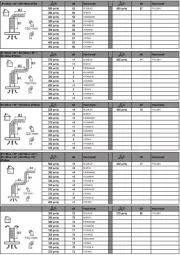
29 Juli 2025
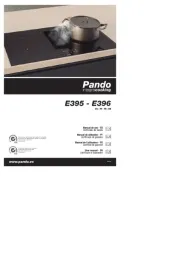
29 Juli 2025

29 Juli 2025
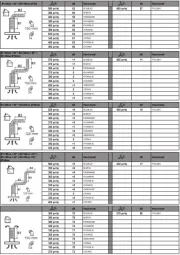
29 Juli 2025
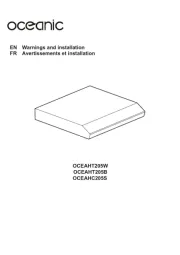
29 Juli 2025
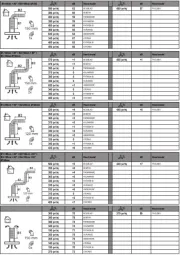
29 Juli 2025
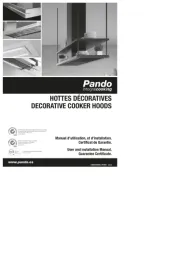
29 Juli 2025
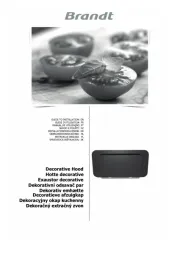
29 Juli 2025
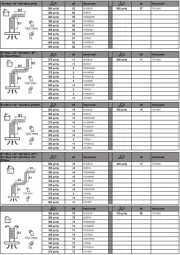
29 Juli 2025
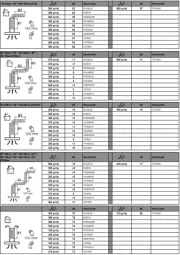
28 Juli 2025